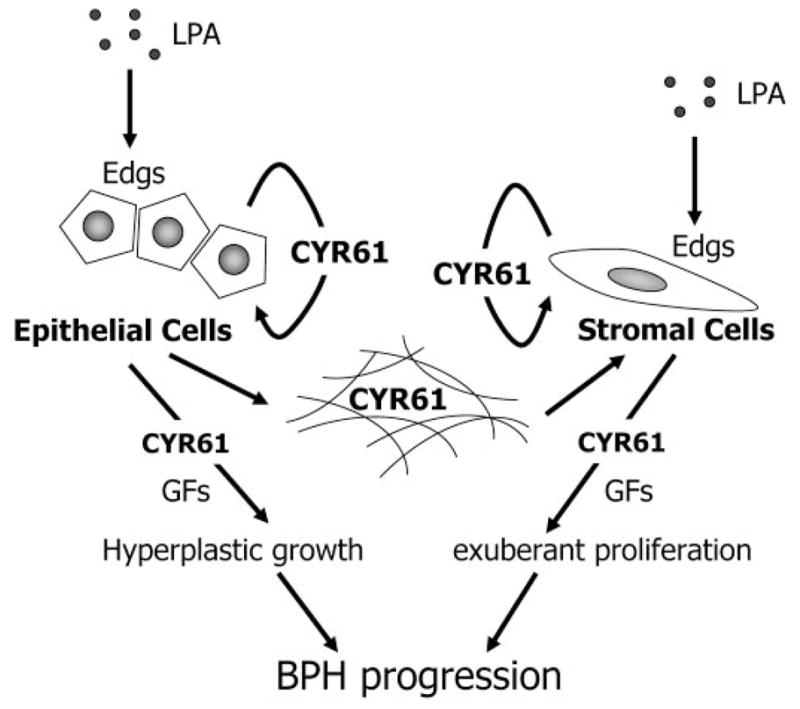Fig. 7.

A hypothetical model for the behavior of CYR61 in the progression of benign prostatic enlargement. Given that LPA serves as a potent regulator in the initiation and/or progression of BPH, we propose the following schema. LPA induces CYR61 mRNA and protein in prostatic tissues by interacting with cell surface-specific LPA receptors (Edgs), probably mainly in the epithelium, in vivo. CYR61 protein triggers a growth-promoting signal, e.g. the activation of p42/ p44 MAPK, via corresponding integrins in both epithelial and stromal cells in an autocrine manner. Some of the CYR61 protein is secreted into the stromal region and affects stromal cells in a paracrine manner. CYR61 coordinates with a certain growth factor (GF), e.g. FBS or PDGF, and plays a functional role in prostatic cell growth, or potentiates GF-stimulated prostatic cell proliferation. As a consequence, epithelial and stromal hyperplasia occurs. Arrows represent relationships that are supported by our data. Edgs, Edg receptors.
